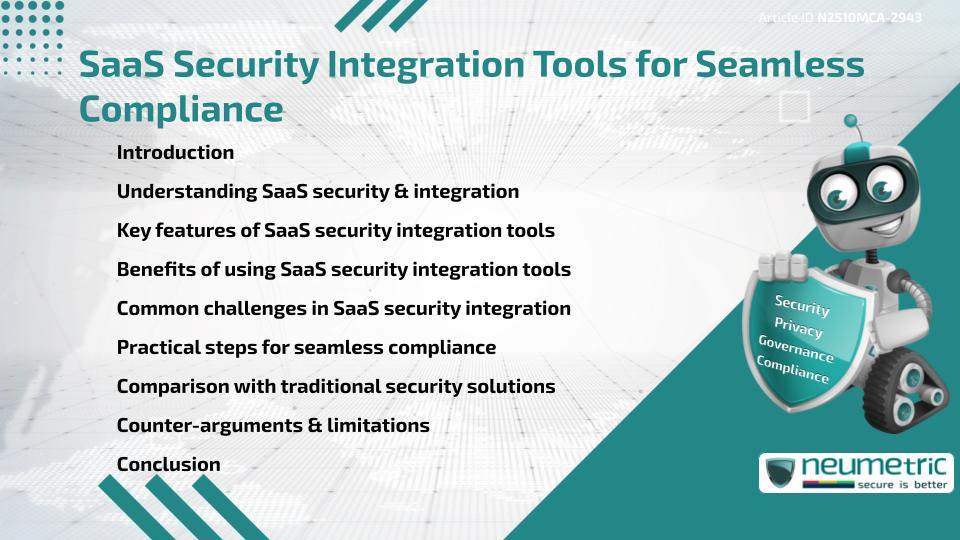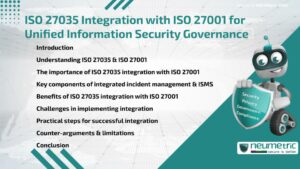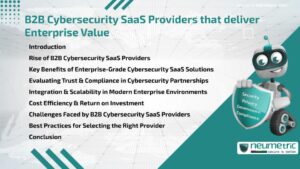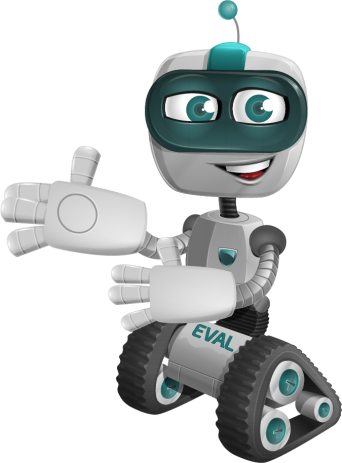Table of Contents
ToggleIntroduction
SaaS applications have become the backbone of modern Business Operations, but securing them remains a growing challenge. This is where SaaS security integration tools come into play. These tools provide centralized control, automate compliance tasks & ensure consistent security across multiple software-as-a-service environments. For compliance teams & IT managers, integrating SaaS security integration tools helps maintain Data Integrity, meet regulatory requirements & enhance operational efficiency.
Understanding SaaS security & integration
SaaS security focuses on protecting data stored, processed & shared through cloud-based applications. Integration tools bridge different SaaS platforms, enabling Organisations to monitor & enforce consistent Security Policies. They consolidate authentication, Access Control, encryption & monitoring into unified dashboards. More information on SaaS security Best Practices can be found in the Cloud Security Alliance guidelines.
Key features of SaaS security integration tools
Effective SaaS security integration tools typically include:
- Identity & Access Management [IAM]: Controls who can access applications & what actions they can perform.
- Single Sign-On [SSO]: Simplifies User access across multiple SaaS systems.
- Data Loss Prevention [DLP]: Detects & prevents unauthorized data sharing.
- API Security: Protects integration channels between SaaS applications.
- Compliance Automation: Continuously monitors adherence to Standards like ISO 27001, GDPR & SOC 2.
The National Institute of Standards & Technology provides detailed security guidelines for Organisations using cloud-based services.
Benefits of using SaaS security integration tools
Businesses benefit from these tools in several key ways:
- Unified visibility: Centralized dashboards provide real-time insights into all SaaS environments.
- Reduced compliance overhead: Automation streamlines auditing & reporting processes.
- Enhanced Data Protection: Continuous Monitoring detects potential security Risks.
- Faster Incident Response: Integrated alerts & automated workflows minimise downtime.
- Improved scalability: Supports seamless security management as Organisations adopt new SaaS applications.
You can learn more about the business value of SaaS security integration at Gartner’s SaaS security reports.
Common challenges in SaaS security integration
Despite the advantages, Organisations often face challenges, including:
- Complex API integrations: Different SaaS tools use varying protocols & Standards.
- Shadow IT Risks: Employees adopting unauthorized apps can create blind spots.
- Vendor dependency: Over-reliance on Third Party solutions may introduce Risks.
- Cost management: Licensing & maintenance costs can escalate with scale.
The SANS Institute offers strategies to address these challenges effectively.
Practical steps for seamless compliance
- Identify compliance Frameworks: Determine which regulations apply, such as ISO 27001, SOC 2 or GDPR.
- Choose scalable tools: Select solutions that support multiple SaaS integrations.
- Automate key processes: Leverage built-in workflows for Risk Assessments & reporting.
- Regularly review configurations: Ensure Policies are updated as business needs evolve.
- Train Employees: Build awareness around secure SaaS usage & data handling.
Implementation guidance can also be found in the CISA Cloud Security resources.
Comparison with traditional security solutions
Traditional on-premises security solutions often focus on local infrastructure, while SaaS security integration tools cater specifically to distributed, cloud-based ecosystems. They enable visibility across multiple providers & adapt dynamically to cloud updates, something traditional tools often struggle to achieve.
Counter-arguments & limitations
Some critics argue that SaaS security integration tools add complexity or create single points of failure. Others claim that automation may overlook nuanced security scenarios. However, when configured properly & complemented with human oversight, these tools significantly enhance organizational resilience & compliance consistency.
Conclusion
SaaS applications are indispensable & managing their security efficiently requires robust integration. With SaaS security integration tools, Organisations can automate compliance, unify visibility & strengthen overall Governance. While challenges exist, the benefits far outweigh the Risks, making these tools a cornerstone of modern digital security strategies.
Takeaways
- SaaS security integration provides centralized, automated protection.
- Key features include IAM, DLP, API security & compliance automation.
- Automation reduces compliance effort & enhances visibility.
- Integration challenges can be addressed through configuration & training.
- Effective use leads to improved security posture & faster compliance.
FAQ
What are SaaS security integration tools?
They are software platforms that centralize & automate the management of security across multiple SaaS applications.
Why are SaaS security integration tools important for compliance?
They simplify compliance by continuously monitoring Data Protection & regulatory requirements across all connected SaaS systems.
Do these tools replace traditional Security Measures?
No, they complement traditional tools by adding visibility & automation specific to SaaS environments.
Are SaaS security integration tools suitable for Small Businesses?
Yes, many tools offer scalable solutions that fit small & mid-sized enterprises.
What Risks do these tools address?
They mitigate Risks related to unauthorized access, data leakage, misconfigurations & compliance violations.
Can integration tools work with multiple SaaS Providers?
Yes, most modern platforms support integration with popular providers such as Microsoft 365, Google Workspace & Salesforce.
How often should compliance checks be automated?
Ideally, compliance monitoring should run continuously or at least on a daily basis to detect changes promptly.
Need help for Security, Privacy, Governance & VAPT?
Neumetric provides organisations the necessary help to achieve their Cybersecurity, Compliance, Governance, Privacy, Certifications & Pentesting needs.
Organisations & Businesses, specifically those which provide SaaS & AI Solutions in the Fintech, BFSI & other regulated sectors, usually need a Cybersecurity Partner for meeting & maintaining the ongoing Security & Privacy needs & requirements of their Enterprise Clients & Privacy conscious Customers.
SOC 2, ISO 27001, ISO 42001, NIST, HIPAA, HECVAT, EU GDPR are some of the Frameworks that are served by Fusion – a SaaS, multimodular, multitenant, centralised, automated, Cybersecurity & Compliance Management system.
Neumetric also provides Expert Services for technical security which covers VAPT for Web Applications, APIs, iOS & Android Mobile Apps, Security Testing for AWS & other Cloud Environments & Cloud Infrastructure & other similar scopes.
Reach out to us by Email or filling out the Contact Form…





